RIDING WITH THE
LEADER OF THE PACK
A Read Easy-Ride Hard Story
By
T.J. Haynes
PUBLISHERS NOTE
This book is fiction.
While the stories, locations and roads exist, the characters, dialog, descriptions and experiences are fiction and products of the authors imagination. Any resemblance to any real person, living or dead, or any real event or circumstance is strictly coincidental. Inclusion of the names of businesses, organizations or government offices in the story does not constitute endorsement by their officers or employees. Any reference to manufacturers or products does not constitute endorsement by or for the manufacturer or product.
RIDING WITH THE LEADER OF THE PACK
Copyright T. J. Haynes, 2009
All rights reserved. No part of this book may be reproduced in any form or by any electronic or mechanical means, including information storage and retrieval systems, without written permission from the publisher. Reviewers may quote brief passages to be printed in a magazine, newspaper or online.
Published by
Posse Management Publishing
P.O. Box 781529, San Antonio, Texas 78278
www.possemanagement.com
ISBN-13: 978-0-9824700-0-8
978-0-9824700-3-9
978-0-9824700-4-6
Printed in the United States of America
Cover Photo by W. L. Haynes
ACKNOWLEDGEMENTS
Special thanks to editor Karl Monger of Austin, Texas. He is the best and a true professional!
Thanks also to Wanda Haynes, Norma Jean Lehr, Robert W. Spanogle, Bradley R. Wildey, Cheri Ray, William Tunnel Rat Haynes and Richard Uncle Dick Woods for their manuscript review, valued insight and recommendations.
To Wanda
 Prologue
Prologue
My name is Joshua Michael Dery, but you can call me Josh. A while back I was on a lone wolf ride through the South Texas Hill Country. It was a beautiful Sunday afternoon. Nature was flooding my senses with the brush of a warm wind, the smell of freshly harvested fields and a spectacular view of distant hills. Leaning and rolling down that twisting road headed nowhere in particular, I felt alert, alive and free.
Suddenly, around a corner came a pack of about twenty motorcycles. I extended my left arm out and low in the traditional, if not mysterious, greeting of the sport, but only two riders returned my salute. The others appeared unwilling to let go of very firm grips on both handlebars, and some were staring ahead so intently I wasnt sure they saw me at all.
As the rumble of their machines faded, my mind began racing. Who were they? Why did most of them seem so tense? What would possess someone to ride in a group if they werent comfortable? How could someone accept the responsibility that comes with being the leader of such a pack? As my thoughts picked up speed, I realized my curiosity had taken over. There was little chance I could return to the solitude of my ride.
I found myself turning around and following them until they pulled into a dirt parking area next to what looked like an old barn. It turned out to be a makeshift roadside bar that catered to area weekend motorcyclists. Over the next forty-five minutes or so I mingled with the group. Although several wore vests or jackets with patches sewn on the back, indicating an affiliation with one riding organization or another, it was clear this was not a club ride.
In conversation I learned they had assembled that morning to participate in a charity run. Most of the riders did not know one another. One guy told me it was his first group ride, and his buddy nodded as though to say, Same here. The person riding the front bike explained he had been asked by the charity to lead the group when he arrived that morning.
They gave us a map, some people fell in behind me and off we went, he said.
Despite the fact that no one knew for sure who they were riding with, the group was enjoying itself at the stop and welcomed me unquestionably. They even asked me to join them for the remainder of the ride. I declined. They were a fun group, full of life and laughter. But, watching them depart, I concluded, based on facial expressions, motorcycle handling skills and general disorganization, that my decision not to ride with them was a sound one. They were clearly more comfortable socializing than riding. Two riders did stay behind, but in spite of obviously feeling intimidated, most were planning to hang on tight until they reached their next stop. The whole experience brought back memories.
The pack that interrupted my solitary ride that day was an example of the new generation of unlikely riding groups. They were together because they showed up at the same place and same time to support a charity. They had no knowledge of one anothers riding skills or habits. Most had little or no group riding experience, and there were no leaders or rules or discipline. No one seemed to realize what they were doing would be unthinkable to the bikers they thought they were emulating.
So why would good and socially responsible people do something their elders in the sport wouldnt consider? I know the answer, because thats how I started riding. They had no idea they were doing anything wrong. They had passed a riding course, gained a little road experience and were participating for a good social reason, and a lot of other good people were with them. So what was the problem?
Like most of the riders in that group, I once thought freedom came as standard equipment with every motorcyclemore a birthright than a responsibility. I quickly learned to love the adrenalin rush that comes with speed and the feeling of power inherent in mastering a machine, but most of all I believed it was cool to be identified as a motorcycle rider. I wanted everyone to think I was just a little wild and carefreeat least on weekends.
I bought a motorcycle, dressed for success and hooked up with a group of riders whose main function was to reinforce one anothers sense of belonging. Like most of my friends, I became part of the popular riding movement that I call the ride to belong crowd. In the process I made a decision to stay away from those who really do live to ride or ride to live.
As a consequence, traditions, based on age-old lessons learned, were lost on me. I had no idea why traditional groups had so much structure or why rules, personal discipline and leadership responsibility were as serious to real bikers as riding skills. I would find out the hard way.
 1
1
Born Leaders
I was born and raised in the small town of Junction, Texas. Its located on the northwest edge of the Texas Hill Country about 100 miles northwest of San Antonio, 450 miles southeast of El Paso and 150 miles northwest of Austin. Junction is a fairly typical west Texas town. With a population of around 2,600, our residents account for about half the people in Kimble County. Back in history, the area was pretty much a wild frontier territory with no real commercial attributes. There is, however, a natural junction where the north and south branches of the Llano River meet, and thats how the town got its name.
Until the 1850s there were few settlements in the area, which was generally regarded as just a good place to stop and rest if you were headed to San Antonio or felt the need to work up enough courage and energy to survive the long haul to El Paso. Not many people even took advantage of land grants during the time of the Republic of Texas, partly because the Apaches were still around. Eventually, however, a few adventurous souls moved in and some rich people from San Antonio started expanding their property holdings, and the area began to get settled.

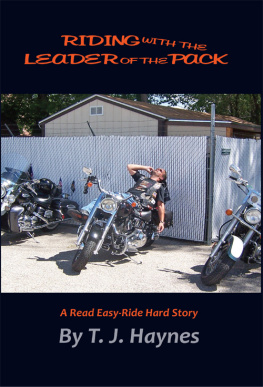
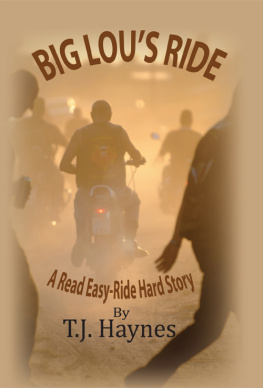
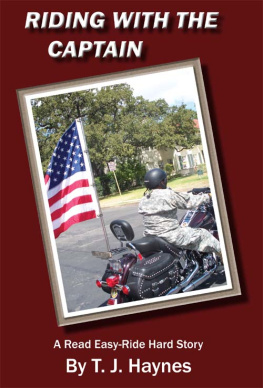

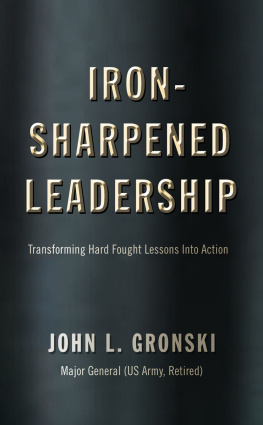

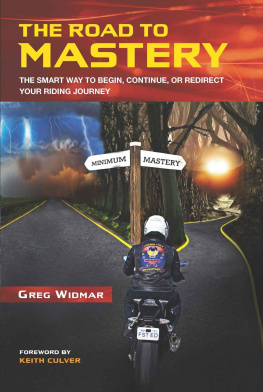

![Sonny Barger & Darwin Holmstrom - Lets ride: Sonny Bargers guide to motorcycling ; [how to ride the right way - for life]](/uploads/posts/book/135921/thumbs/sonny-barger-darwin-holmstrom-let-s-ride-sonny.jpg)

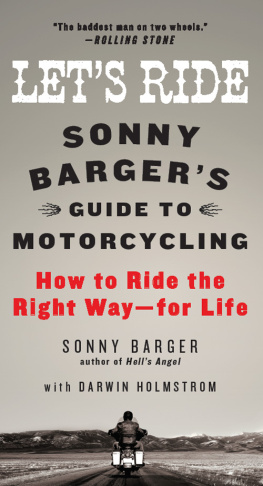
 Prologue
Prologue
 1
1